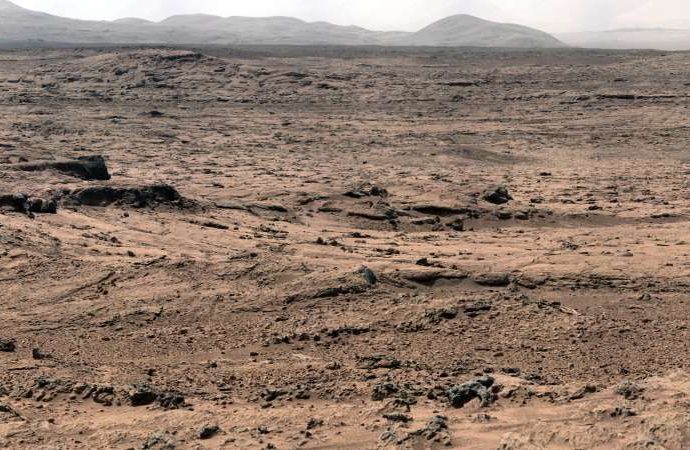NASA’s Curiosity rover sniffed out an unexpected seasonal variation to the oxygen on Mars, according to new research.
Source: Gizmodo
Curiosity has long been returning some appropriately curious results. After locating methane on the planet, studies from its spot in Gale crater found regular changes to the methane unexplainable by the environmental factors that scientists are already aware of. Now varying oxygen has joined methane in the Martian mysteries bucket.
Oxygen has shown “significant seasonal and interannual variability, suggesting an unknown atmospheric or surface process at work,” the authors write in the paper published today in the Journal of Geophysical Research.
Mars, like Earth, is tilted on its axis of rotation. That means its northern and southern hemispheres experience seasons like Earth does, summer when the hemisphere points toward the Sun and winter when it points away from the Sun. Scientists have been using Curiosity’s Sample Analysis at Mars (SAM) instrument to monitor the abundance of various molecules in the planet’s atmosphere and how they change with its seasons. Today, they released the result of five Earth years’ (three Mars years’) worth of data taking.
The results for some elements weren’t especially surprising: levels and changes to the amount of argon gas were broadly similar to measurements taken by the now-defunct Opportunity rover. Nor did Curiosity measure much nitrogen flowing—on Earth, life interacts with the atmosphere and the soil through a complex nitrogen cycle. If such a cycle exists on Mars, it doesn’t have an impact on the planet’s atmospheric gas, the authors write.
But then… there’s the oxygen. “The SAM measurements of [oxygen] in Gale crater do not show the annual stability or seasonal patterns that would be predicted based on the known sources and sinks in the atmosphere,” the authors wrote. There was a whole lot more oxygen than expected during the Martian northern hemisphere’s late spring to summer (Curiosity’s late fall to winter), and a lot less oxygen than expected during the northern hemisphere’s winter (Curiosity’s summer).
Scientists tried to devise an explanation for this. Maybe the instrument was broken (it wasn’t), or maybe the oxygen was from carbon dioxide or water breaking up in the atmosphere. But that would mean there’s much more water than the planet already has in its atmosphere, or carbon dioxide breaks up too slowly to produce the oxygen signatures, according to a NASA release.
“The fact that the oxygen behavior isn’t perfectly repeatable every season makes us think that it’s not an issue that has to do with atmospheric dynamics. It has to be some chemical source and sink that we can’t yet account for,” the study’s first author Melissa Trainer, a planetary scientist at NASA’s Goddard Space Flight Center, said in the release.
Perhaps the fluctuating oxygen has something to do with the fluctuating methane. Who knows! Trainer hopes other scientists will help figure out the mystery.
Here at Gizmodo, well, we’re not saying aliens, but… well…
Source: Gizmodo

































Leave a Comment
You must be logged in to post a comment.